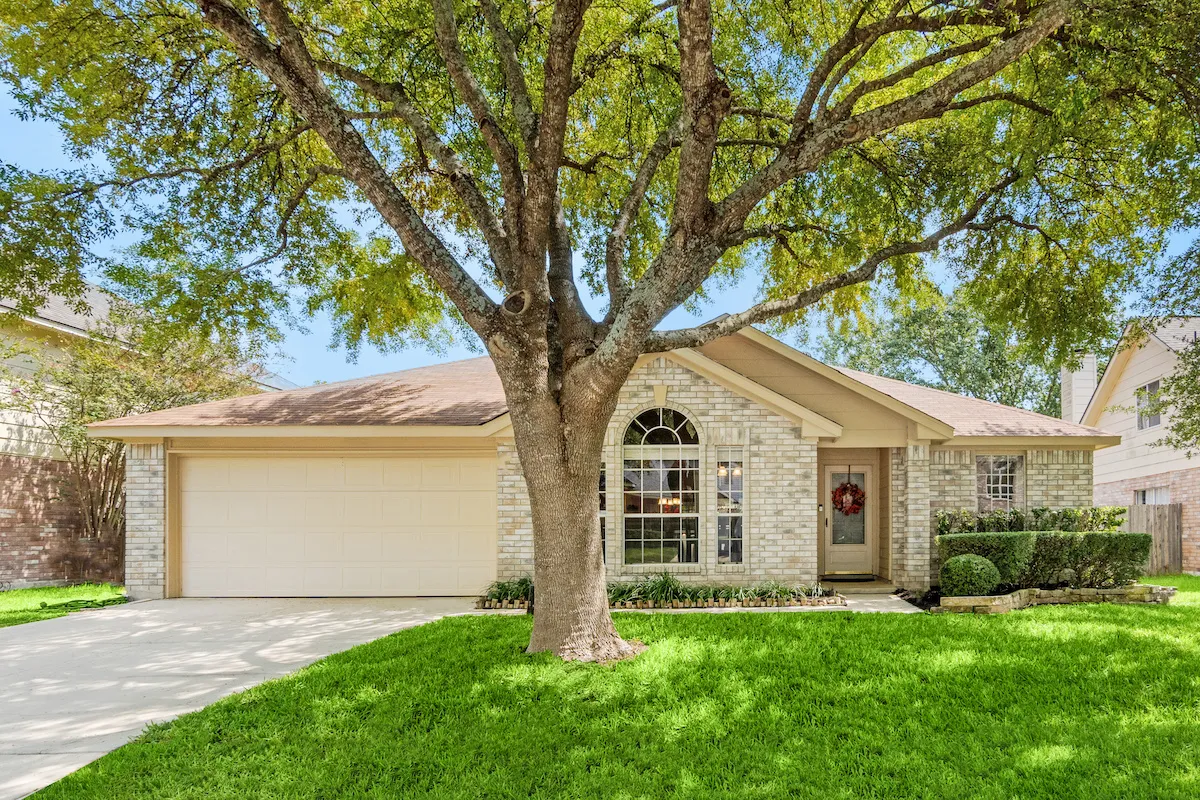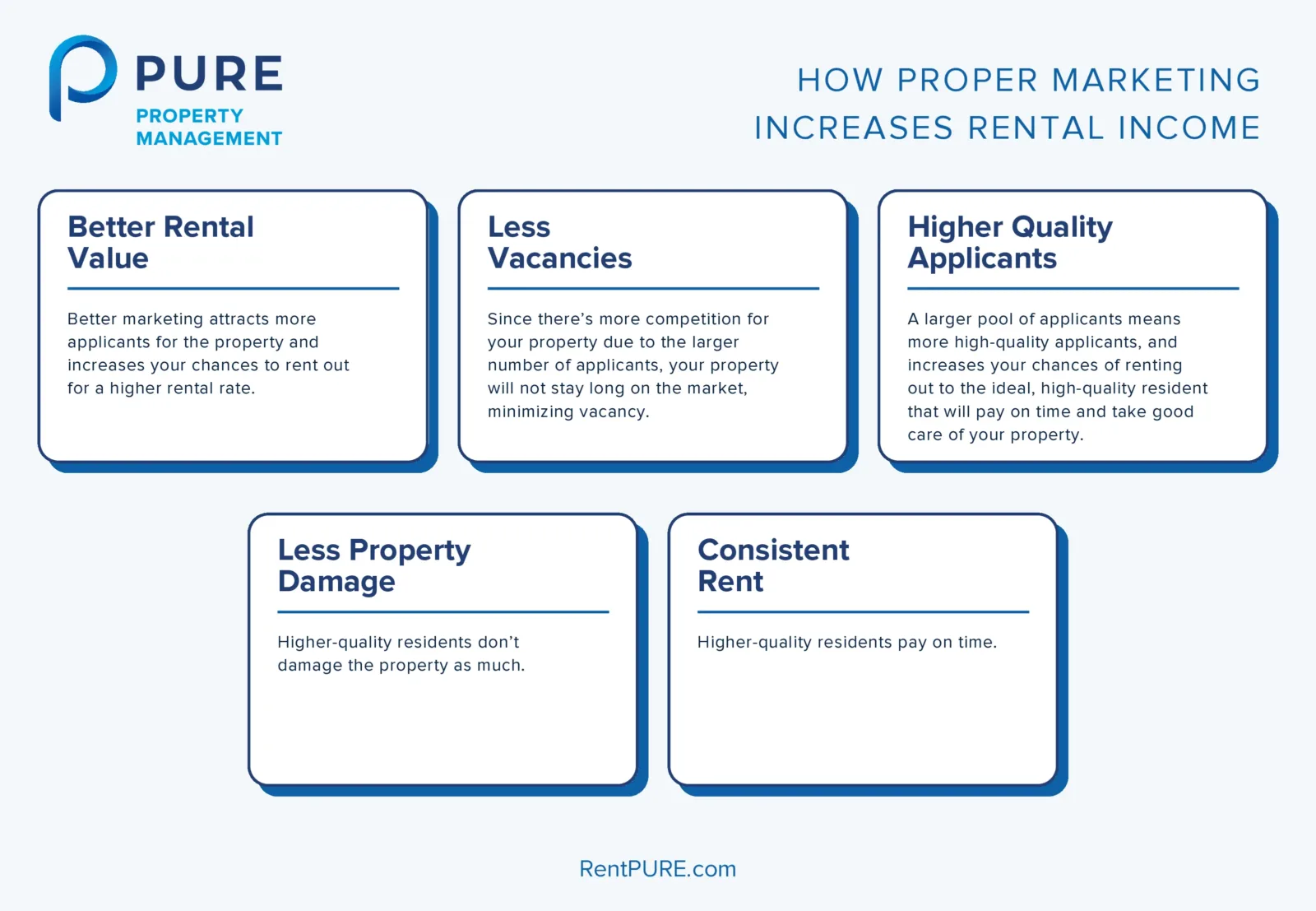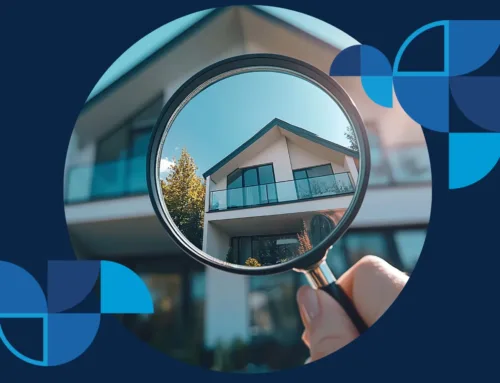How to Increase Rental Property Income: Turning Poorly Performing Properties into Assets that Generate Cash Flow

Investing in rental properties can be a lucrative venture, but what happens when a property isn’t performing as expected? Many property owners face the challenge of underperforming assets that drain resources rather than generate cash flow. There are plenty of ways in which rental properties can be low-performing, but some of the most common are:
- Low Rental Rate: The property does not generate enough rent to cover expenses, making it difficult to achieve positive cash flow.
- High Vacancy Rate: Extended periods where the property remains unoccupied, leading to loss of potential income.
- Problematic Residents: Dealing with residents who frequently damage the property or fail to pay rent on time, increasing maintenance and legal costs.
- High Maintenance Costs: Frequent and costly repairs that exceed the rental income, reducing profitability.
However, with the right strategies, even the most poorly performing properties can be transformed into valuable assets that boost your income.
In this post, we’ll explore actionable steps on how to increase rental property income and turn your underperforming properties into cash-generating assets. Whether you’re dealing with high vacancy rates or struggling to keep up with maintenance costs, these strategies will help you unlock the full potential of your rental property.
Before we begin, it’s important to understand that there are multiple avenues by which you can increase rental income. For the sake of simplicity and readability, we will split these in three main strategies:
- Strategies to increase the property’s rental value: Rental value is perhaps the most important factor influencing your rental income. The bigger the rent, the bigger the overall rental income.
- Strategies to increase rental income from sources other than the rental value of the property: There are multiple other avenues to maximize your rental income besides the value of the rent.
- Strategies to ensure consistent, steady rental income: You may have an excellent rental rate for your property, coupled with additional streams of income from pet rents and resident benefits packages. If your property is vacant for a long time, or your residents don’t pay the rent on time, your optimized rental income strategy won’t bear fruit.
One more point to clarify before we delve into each of these strategies: what’s rental value, what’s rental income, and how do the two differ?
Rental Value vs. Rental Income: What’s the Difference?
Rental Value refers to the estimated amount a property is worth in terms of potential rent. This value is based on various factors such as location, size, amenities, and current market conditions.
It’s essentially an appraisal of what the property should ideally command in the rental market. For example, a property in a prime location with modern amenities and a good size will have a higher rental value compared to a similar property in a less desirable area.
Rental Income, on the other hand, is the actual income a landlord receives from renting out their property. This includes not just the rent paid by tenants but also any additional income from sources such as parking fees, pet fees, or maintenance charges. Rental income is the tangible money that flows into the landlord’s pocket and can be influenced by factors such as tenant turnover, vacancies, and timely payment of rent.
Your aim should generally be to increase both.
|
SUMMARY
|
Section 1: Strategies to Increase the Property’s Rental Value
To list your property at a higher rent, focus on making improvements that add value. Upgrading the interiors, enhancing curb appeal, and adding modern amenities can significantly increase your rental value. Even small changes can make a big difference in attracting tenants willing to pay more.
For a comprehensive guide on strategies to increase rent, please refer to our in-depth post here. Below is a summary of the key points on effective rent increases.
Proper Marketing
As a rental investor, marketing your rental property effectively is crucial for attracting a larger number of applicants. Why does that matter? Because the bigger the competition for your property, the bigger the chances to sign high-quality residents at a higher rent value.
This is a breakdown of marketing activities you should perform for your property:
High-Quality Visual Content
Invest in professional photography to capture stunning images of your property and consider adding virtual tours. High-quality visuals make your listing stand out and allow potential residents to explore the property remotely, from the comfort of their homes. See below an example of high-quality professional property.

Utilize Multiple Listing Platforms
List your property on popular rental sites like Zillow and Apartments.com. Also, leverage social media platforms like Facebook and Instagram to showcase your property to as many potential residents as possible.
Detailed and Compelling Property Description
Highlight the key features of your property, such as location, nearby amenities, and recent upgrades. Use engaging language that enhances the lifestyle benefits of living at your property. Here’s an example of how we do it at PURE Property Management, to give you an idea of the level of detail you need to add to your property descriptions.

Incentives and Communication
- Offer Incentives: Attract more applicants by offering a discount on the first month’s rent.
- Effective Communication: Quickly respond to inquiries and provide clear, detailed information throughout the rental process to build trust and maintain a professional image.
Rental Property Upgrades
Improving your rental property effectively is essential for attracting residents and justifying higher rental prices. However, a higher rental price is not the only thing that matters: a renovated property contributes to the overall happiness of your resident and prolongs the duration of their tenancy as well.
Please read our complete article on how to renovating your property if you are interested in an in-depth guide with strategies and pricing.
Here’s a short guide on key upgrades that can significantly enhance the value and appeal of your property.
1. Kitchen Renovation
The kitchen often serves as the heart of the home, making it a pivotal area for upgrades:
- Upgrade Appliances: Replace old and mismatched appliances with new ones that match in finish and style to give the kitchen a cohesive look. You don’t need the most expensive models, but updated appliances improve functionality and appeal.
- Refresh Cabinets: Instead of buying new cabinets, consider sanding and painting the existing ones. Adding new hardware can modernize them at a fraction of the cost.
- Countertops: If possible, install new granite or similarly durable countertops to enhance aesthetics and durability.
- Finishing Touches: Simple additions like a new faucet and glass tile backsplash can elevate the kitchen’s look while being low maintenance.
2. Bathroom Remodel
An updated bathroom can significantly influence potential residents’ decisions:
- Basic Updates: Replace old toilets, add new shower heads, and update faucets and cabinet hardware.
- Space Maximization: In small bathrooms, use creative solutions like pocket doors or barn doors to save space, and add shelving for extra storage.
- Aesthetic Upgrades: Install a new vanity or repurpose an old dresser as one for a unique look. Convert bathtubs to walk-in showers if space and budget allow.
3. Curb Appeal Improvements
First impressions are crucial, so enhancing the exterior of your property can pay off:
- Landscaping: Maintain simple, low-maintenance landscaping. Consider adding new grass, a small garden, or decorative planters.
- Painting: A fresh coat of exterior paint or even just painting the front door can significantly freshen up the property’s appearance.
- Maintenance: Keep the exterior tidy by trimming trees and shrubs and repairing any worn-out paths or driveways.
4. Flooring Updates
Floors are a major factor in a property’s appeal:
- Replace Old Flooring: Install new flooring, especially in high-traffic areas. Hardwood floors are preferred for their modern look and ease of cleaning, while carpets should be avoided as they trap odors and require more maintenance.
5. Functional and Aesthetic Touch-ups
Small changes can make a big difference:
- Paint: Neutral wall colors offer a clean, blank slate. Offering to customize paint colors for residents can be a unique selling point.
- Lighting and Hardware: Updating light fixtures, cabinet handles, and door knobs can modernize the space quickly and affordably.
6. Open Floor Plan
If feasible, create an open floor plan by removing non-load-bearing walls to make the space feel larger and brighter. This layout is popular for its airy feel and ease of movement.
7. Amenities That Add Value
Consider what residents value most:
- Convenience Features: Install dishwashers and in-unit washers and dryers. Air conditioning and off-street parking are also significant pluses.
- Outdoor Spaces: If possible, provide areas like patios, balconies, or fenced yards, especially if you allow pets.
All these factors will result in a low vacancy rate. If you want to know what a rental vacancy rate is and how to optimize it, read our complete guide.
Raising Rent Upon Lease Renewal
Regular rent increases upon lease renewal are essential to keep pace with inflation and improve your rental property’s profitability. Here’s a concise approach:
- Set Expectations Early: Inform new residents that annual rent increases are part of the leasing policy to prepare them for future adjustments.
- Link Increases to Market Trends: Adjust rent based on local market trends. Rent prices typically increase by about 2% to 4% per year depending on the market conditions, but this number can fluctuate a lot during times of inflation.
- Advance Notice: Provide residents with at least 60 to 90 days notice before the lease renewal to meet legal requirements and allow residents to budget accordingly.
- Communicate Value: Highlight any property improvements or added benefits to justify the rent increase.
It’s really important to keep up with the market so your rental value is a realistic reflection of what it’s actually worth.
Additional Strategies for Increasing Rental Value
Short-term Rental Premiums
If your local regulations allow, offering the property as a short-term rental for parts of the year can attract higher rates than traditional leases. This is particularly effective in tourist-heavy or seasonal areas.
Offering Furnished Options
Furnished apartments can attract higher rents, especially in markets that cater to business professionals or short-term residents. The convenience of a furnished unit is a significant draw for certain resident demographics.
Parking and Storage Fees
If your property includes access to parking or additional storage space, consider charging for these facilities. In urban areas, parking can command a particularly high premium.
Section 2: Strategies to Increase Rental Income from Sources Other than Rent
It’s important to implement strategies that can help you generate additional income.
Property Maintenance
Maintaining your property isn’t just about fixing things when they break; it’s about enhancing your property’s appeal, ensuring its longevity, and keeping your residents satisfied. Here’s how proactive maintenance increases your rental income:
| HOW PROACTIVE MAINTENANCE INCREASES RENTAL INCOME |
|
Preventive Maintenance
Engaging in preventive maintenance means keeping ahead of potential issues before they become costly problems. This includes:
- Scheduled Inspections: Regularly checking systems like roofing, plumbing, HVAC, and electrical setups can nip problems in the bud, saving you money and headaches down the line.
- Seasonal Care: Tailoring maintenance tasks to the season—cleaning gutters in the fall or servicing the air conditioning before summer hits—keeps your property running smoothly year-round.
This kind of attention not only minimizes the chance of disruptive breakdowns but also keeps your property looking its best, both crucial for attracting and retaining residents.
On-Demand Maintenance Response
Being quick to address issues as they arise, responsive maintenance is key to keeping residents happy and loyal. This means:
- Quick Fixes: Responding swiftly to resident maintenance requests shows you care about their comfort and are on top of property management, encouraging them to renew their leases.
- Protecting Property Value: Tackling repairs immediately helps prevent minor issues from turning into major damage, protecting your investment in the long run.
Effective responsive maintenance ensures residents feel valued and that the property remains in tip-top condition, both of which can lead to higher rental values.
Charging for Premium Amenities
Offering and charging for premium amenities can significantly increase rental revenue. Consider these options:
- In-unit Amenities: Upgrades like high-end appliances, in-unit laundry, or smart home devices can justify higher rents.
- Building Amenities: Facilities such as a gym, pool, or community area are highly attractive and can command additional fees.
Implementing Pet Rent
Pet rent is an additional monthly charge that pet owners pay to cover the potential wear and tear caused by their pets. It’s common practice among professional property management companies that can add a significant amount to your rental income. When implementing pet rent make sure to set:
- Clear Pet Policies: Define what types of pets are allowed and any restrictions regarding size or breed.
- Reasonable Charges: Set a monthly pet rent that reflects the potential for additional maintenance without being overly punitive.
| Important: Before implementing a pet rent, make sure to check your local and state laws regarding any restrictions of the amount you can charge, the types of pets you can apply it to, or whether you can implement it at all. |
Implementing Resident Benefit Packages to Enhance Resident Satisfaction
Resident benefit packages are an innovative way to enhance resident retention, fostering loyalty and potentially justifying higher rents due to the added value.
These packages can vary widely but typically include services and amenities that make life more convenient and enjoyable for residents. Here’s how to develop and implement effective resident benefit packages, along with creative ideas to keep residents happy and engaged:
Core Components of Resident Benefit Packages
- Utility and Service Bundling: Include essential services such as high-speed internet, water, or even cable TV as part of the rental agreement. Bundling these utilities can offer residents cost savings and convenience, making the logistics of moving and monthly bill management easier.
- Home Maintenance Services: Offer regular home maintenance checks and easy reporting tools for repair requests. This not only ensures the property is well-maintained but also reduces the hassle for residents to keep their home in top condition.
- Safety and Security Features: Enhance safety through upgraded security systems, better lighting around the property, or even partnerships with local security firms to provide 24/7 monitoring services.
- Renter’s Insurance: Encourage or require residents to have renter’s insurance by facilitating the sign-up process. Offer partnerships with insurance companies that provide discounts or special terms to your residents. Renter’s insurance typically covers personal property loss and liability, which can be essential during unexpected circumstances.
| Important: Some states prohibit Resident Benefit Packages. As with pet rent, you should check your local and state laws to see if and how you can implement a resident benefit package. |
Creative Additions to Resident Benefit Packages
These benefits might initially seem costly, but they’re key in learning how to increase rental property income. You can introduce them gradually (with annually increasing rent) for long-term residents who have consistently added value to your rental business.
- Health and Wellness Programs: Organize wellness programs such as fitness classes, yoga sessions, or partnerships with local gyms for discounted memberships. Providing bike storage or creating walking path maps of the area encourages a healthy lifestyle.
- Community Building Events: Host regular community events such as BBQs, holiday parties, or family movie nights. These events can help build a sense of community and make residents feel more connected to their neighbors.
- Pet-Friendly Perks: For pet owners, offer amenities like pet grooming services, dog walking, or even pet daycare discounts. Installing pet waste stations around the property and offering a small fenced dog park can significantly increase the appeal for pet owners.
- Technology Upgrades: Provide smart home devices as part of the rental agreement, such as smart thermostats, which offer convenience and potential savings on energy bills. An app for residents to manage their lease, make payments, and communicate with property management can also add significant value.
- Educational and Professional Development: Offer workshops or seminars on important life skills, financial planning, cooking classes, or even professional development sessions. Partnering with local businesses or educational institutions for these programs can add substantial value.
- Concierge Services: Depending on the property type and location, offering concierge services such as parcel storage, dry cleaning pickups, and deliveries, or even organizing transportation can be a major perk for busy professionals.
Implementing the Packages
To effectively implement these benefit packages:
- Survey Residents: Before launching, survey potential and current residents to find out which services they value most. This ensures the benefits align with resident needs and desires.
- Clear Communication: Clearly communicate the benefits and any additional costs associated with these packages. Transparency is key to maintaining trust and satisfaction. Sometimes, residents might not agree to a benefits package, in which case it is important to convey the importance of having one and being firm about your position.
- Feedback Loop: Once implemented, establish a feedback loop to assess resident satisfaction with the services offered. Use this feedback to adjust and improve the offerings.
Resident benefit packages, when thoughtfully designed and implemented, can significantly enhance resident satisfaction and retention. By creatively addressing the needs and desires of residents, you can differentiate their properties from competitors, potentially justify higher rents, and create a vibrant, engaged community.
Section 3: Strategies to Ensure Consistent, Steady Rental Income
Keeping your vacancy rate as low as possible is key to a steady rental income. The more predictable your business model, the more profitable and scalable it will be in the long run. Here are 2 strategies to keep the vacancy rate as low as possible.
Effective Marketing
We’ve already talked in detail in section 1 about the benefits of property marketing for increasing rental value, but there are more general benefits that marketing your property the right way bring: finding good-quality residents fast means you lower your vacancy and you make sure your residents take good care of your property, which in turn means less damage and less renovation and repair costs over time.
Here’s why proper marketing that brings in more applicants positively impacts the rental income of the property:

Careful Resident Screening
Resident screening is a fundamental strategy for maximizing rental income and ensuring the long-term profitability of rental properties.
The process serves as a crucial safeguard, helping to identify residents who are likely to pay rent on time, take good care of the property, and comply with lease terms.
It might sound counterintuitive, but it’s actually worth choosing residents with better histories even at a lower rent, because in the long run, you’re earning more. Residents who cause trouble could set you back thousands of dollars over the course of a year.
Benefits of Careful Resident Screening
In short, here’s what you’re getting yourself by making sure the rental process starts off on the right foot:
- Stable Tenancies & Reduced Turnover Costs: Effective screening leads to longer tenancies, significantly reducing the frequency and associated costs of vacancies. This ensures a more predictable and consistent revenue stream, enhancing the financial stability of your property.
- Minimized Maintenance and Legal Expenses: Selecting the right residents minimizes the likelihood of property damage and disruptive behavior, reducing both maintenance and potential legal costs. This careful selection process protects landlords from the financial burdens of extensive repairs and legal disputes.
- Enhanced Property Value: High standards in resident selection help maintain the property’s condition, making it more attractive to prospective residents and maintaining its appeal in the competitive real estate market. A well-maintained property not only attracts higher quality residents but also preserves or increases its market value.
- Long-term Profitability: Rigorous resident screening is an investment in the property’s future. By ensuring the quality and reliability of residents, landlords can improve cash flow and secure the property’s long-term profitability and sustainability.
Hiring a Property Manager
For landlords who may not have the time or expertise to implement all the strategies mentioned in this blog post, hiring a property manager can be an invaluable decision. Property managers are well-equipped to handle the day-to-day operations of rental properties, bringing a level of professionalism and efficiency that can significantly enhance rental value.
Key Benefits Provided by Property Managers:
- Expert Market Knowledge: Property managers maintain up-to-date knowledge of the rental market, allowing them to set optimal rental prices and adjust them according to market trends to maximize your income.
- Resident Management: From screening potential residents to handling lease renewals and managing resident relationships, property managers ensure that your property is occupied by reliable residents and that resident turnover is minimized.
- Maintenance and Upkeep: Regular maintenance is crucial for preserving the value of your property. Property managers coordinate these tasks efficiently, ensuring that the property remains in top condition, which can justify higher rental rates.
- Regulatory Compliance: With extensive knowledge of local housing laws and regulations, property managers keep your property compliant, avoiding potential legal issues and fines.
- Time-Saving: Delegating the management of your property frees up your time for other business ventures or personal pursuits, while still ensuring that your investment continues to yield high returns.
Property managers are primed to enhance the rental value of your property through professional management, making them a worthy investment for landlords looking to optimize their rental business without personal oversight of every detail.
In Conclusion
Transforming underperforming rental properties into profitable assets requires a strategic and professional approach. Here’s how to increase the rent on your property:
- Enhance Property Value: Regular updates and effective marketing are crucial. By maintaining your properties in excellent condition and presenting them well, you attract higher-quality residents.
- Manage Vacancy Rates Efficiently: Keeping vacancy rates low is key to maintaining a steady income stream. Implement targeted marketing strategies and foster strong resident relationships to minimize vacancies.
- Offer Valuable Resident Benefits: Including thoughtful perks such as bundled services and comprehensive insurance options can significantly enhance resident satisfaction and loyalty.
By putting these practical strategies into play, you can learn how to increase rental property income, ensuring your properties keep turning a profit for years to come. Get proactive with your property management—it’s the best way to tap into your investments’ full potential.







